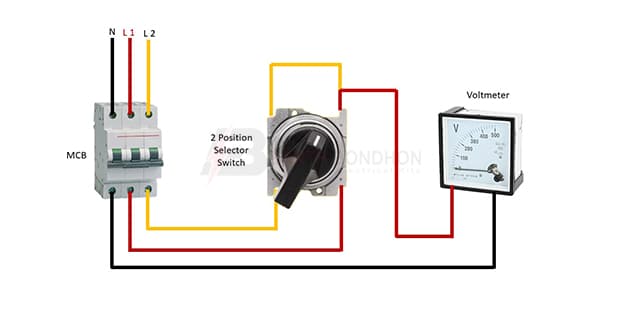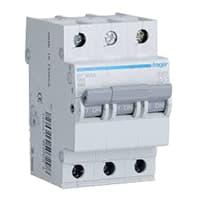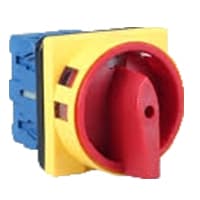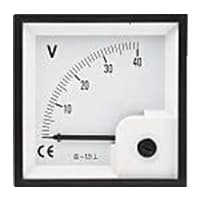Voltmeter Selector Switch Wiring Diagram:
This diagram shows how to make a voltmeter selector switch wiring diagram. In this circuit, we use a 2-position selector switch, a voltmeter, and a TP MCB ( Tripple Pole Miniature Circuit Breaker ). First, we need to input phase and neutral connection to the MCB, then input phase connection to the selector switch, then need input phase and neutral connection to a voltmeter. Now this circuit is ready for use. If you want to know more about this circuit please check our youtube video below the post.
Advertisements
Components needed For this Project:
You can get the components from any of the sites below:
- TP MCB 40A [See Buy Click Amazon]
- Selector Switch (220V AC) [See Buy Click Amazon]
- single phase Volt Meter [See Buy Click Amazon]
*Please note: These are affiliate links. I may make a commission if you buy the components through these links. I would appreciate your support in this way!
Advertisements
Components used to make the Voltmeter Selector Switch Wiring:
The full meaning of MCB is Miniature Circuit Breaker for TP MCB. MCB is an electromagnetic switch or device. If for any reason a short circuit occurs in the supply line or load line (line to line or line to neutral) or in case of overload MCB. the MCB automatically trips and disconnects the main line circuit or household power supply Connection. TP MCB In 3 Pole MCB, Switching & Protection is affected in only 3-Phases and the Neutral is not part of the MCB. 3 pole MCB signifies the Connection of Three Wires for a 3-Phase system Red-Yellow-Blue Phase. 3-Phase Supply Only Without Neutral.
02. Selector Switch:
A Mechanical Switch That can be rotated Left, right, or center to open or close the Electrical contacts is known as a Selector switch. The Main Function of This Selector Switch is to Control Devices and also to Switch Between a Minimum of 2 or Above Electrical Circuits. The Perfect Used for Selector Switch is When Used for Controlling the Output of a Device. We know that a Selector switch is Used to control the electrical current flow in a Circuit it can also be used to both Initiate and inhibit the Current Flow.
An instrument that measures the potential difference between any two points in a circuit directly in volts is called a voltmeter. A voltmeter is an Electrical instrument that directly measures the potential difference between any 2 points in a circuit in volts. The voltmeter is connected in parallel with the 2 points in the circuit where the potential difference is to be measured. This instrument consists of a galvanometer. Like an electric cell or an ammeter, a voltmeter has 2 terminals, a positive and a negative terminal. Usually, the positive end is red and the negative end is black.
Thank You for visiting the website. Keep visiting for more Updates.
Frequently asked questions
With the voltage selector switching system, the end user can tell the equipment which wiring system to use based on where the switch is set. The switch directs the current Diagram to the correct components to handle the voltage required.
The voltmeter is connected in parallel with the circuit Diagram. This means that the voltmeter does not draw any current from the circuit diagram and thus does not affect the voltage measurement. The voltmeter was connected to the 2 points in the circuit diagram where you want to measure the voltage drop.
It's easy to make a digital voltmeter. All that's needed is an Arduino and a 16x2 liquid crystal display (LCD). Using an Arduino to measure voltages was relatively simple. Inside the Arduino, there are multiple analog input pins connecting to an analog-to-digital converter (ADC).
To connect a voltmeter to a circuit diagram you will need to use two wires. One wire will be connected to the voltmeter's positive terminal, and the other wire should be connected to the voltmeter's negative terminal. The two points in the circuit you want to measure the voltage between will be connected to these two wires.
voltmeter, the instrument that measures voltages of either direct or alternating electric current on a scale usually graduated in volts, millivolts (0.001 volt), or kilovolts (1,000 volts). Many voltmeters were digital, giving readings as numerical displays.
Read more Single Phase Wiring
What is a kilowatt-hour (kWh) | kwh formula | What does kwh mean
Introduction to Electrical Units and CircuitskW and kWh on your electricity bill As your home uses electricity during...
What is the Difference Between kVA | What does KVA mean | kVA formula
Difference Between KVA ExplainedWhat does KVA Mean? There are technical terms aplenty when it comes to generators, and...
Power Factor | Power Unit | Energy | Electricity Unit
Power factor definition | Calculating Power FactorPower Factor Values In a purely resistive circuit, the power factor...




0 Comments